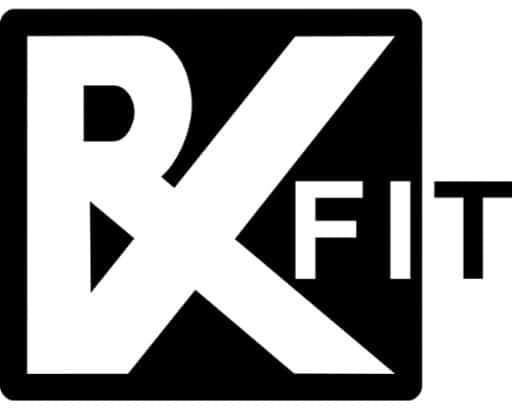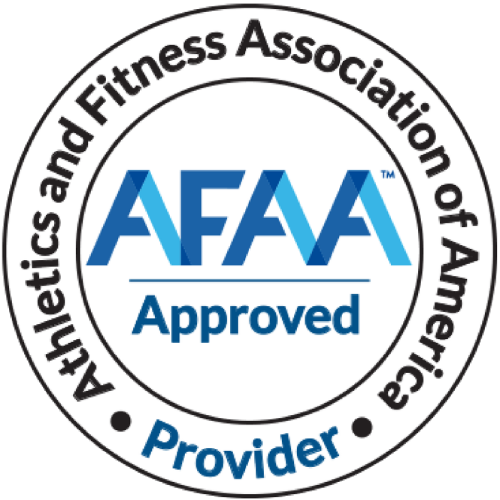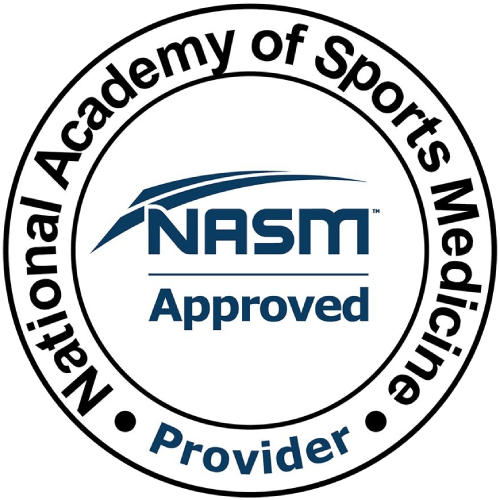So, how long does it actually take to build muscle? You might start noticing some changes as soon as 4 to 12 weeks into a consistent training routine. But when it comes to visible, significant muscle growth, you’re generally looking at a timeframe of about 3 to 6 months.
Of course, this varies widely depending on factors like your genetics, age, and how familiar you are with weightlifting.
In this guide, we’ll walk you through the different stages of muscle development and highlight the key elements that influence how quickly you’ll see results.
Key Takeaways
- Muscle growth occurs in distinct phases: initial adaptation (2-4 weeks), early development (4-12 weeks), and substantial growth (3-6 months), with each phase requiring different training focuses.
- Key factors influencing muscle-building timelines include genetics, age, sex, and training experience, which affect individual muscle gain rates and potential.
- Effective tissue building requires a structured resistance training program that emphasizes progressive overload, proper nutrition with adequate dietary protein, and sufficient recovery through quality sleep and training frequency.
Understanding Muscle Growth Phases
Muscle growth is a step-by-step journey that unfolds through distinct phases which are: initial adaptations, early development, and substantial growth. Each phase plays a unique role in increasing your muscle size and strength, shaping the overall muscle-building process.
Fundamentally, muscle growth is about how your muscle cells adapt and repair themselves. As you train, these cells grow bigger and stronger, but this transformation happens gradually through these different stages. Knowing what to expect at each phase can help you set realistic goals and track your progress more effectively.
Initial Adaptation Phase

When you first start lifting weights, your body goes through what’s called the initial adaptation phase. Interestingly, the early strength gains you notice aren’t because your muscles have suddenly bulked up. Instead, your nervous system is learning to work better.
This means your brain and nerves become more efficient at activating muscle fibers, improving coordination and strength without much change in muscle size.
You’ll likely see strength improvements within 2 to 4 weeks, thanks to these neural adaptations. While your muscles might not look dramatically bigger yet, you could notice better muscle definition and endurance.
Everyday tasks, like climbing stairs or carrying groceries, may start feeling easier. This phase is important because it prepares your body for the heavier lifting and bigger muscles to come, and you might even feel less joint strain as your muscles get stronger.
Early Development Phase

After your nervous system has adjusted, usually between 4 and 12 weeks into training, you begin to gain muscle and it starts to show too. This is the early development phase, where hypertrophy (the increase in muscle fiber size) takes center stage. Weightlifting causes tiny tears in your muscle fibers, and as they repair, your muscles get bigger and stronger.
Beginners often see quicker gains during this period compared to experienced lifters. Many notice visible growth around the 6-week mark, marking the shift from neural improvements to actual muscle enlargement.
This phase is exciting because it’s when the changes you’ve been working toward start to show. Still, patience is key, as building muscle mass is a gradual process.
Substantial Growth Phase
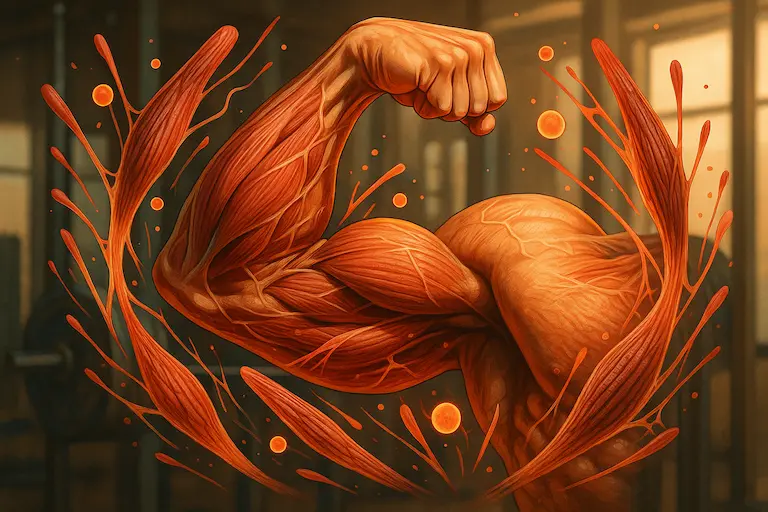
Significant muscle growth doesn’t happen overnight. It usually takes consistent effort over 3 to 6 months or more. During this substantial growth phase, your muscles increase noticeably in size and strength. The most dramatic changes often occur within the first 18 to 24 months of regular strength training.
To keep progressing, you need to challenge your muscle cells with progressively added weights or resistance. This principle, known as progressive overload, is essential to stimulate ongoing growth.
Equally important is giving your muscles enough time to recover and adapt between workouts. With dedication and the right approach, this phase lays down a solid foundation for lasting muscle development and strength gains.
Factors Influencing Muscle Building Timeline
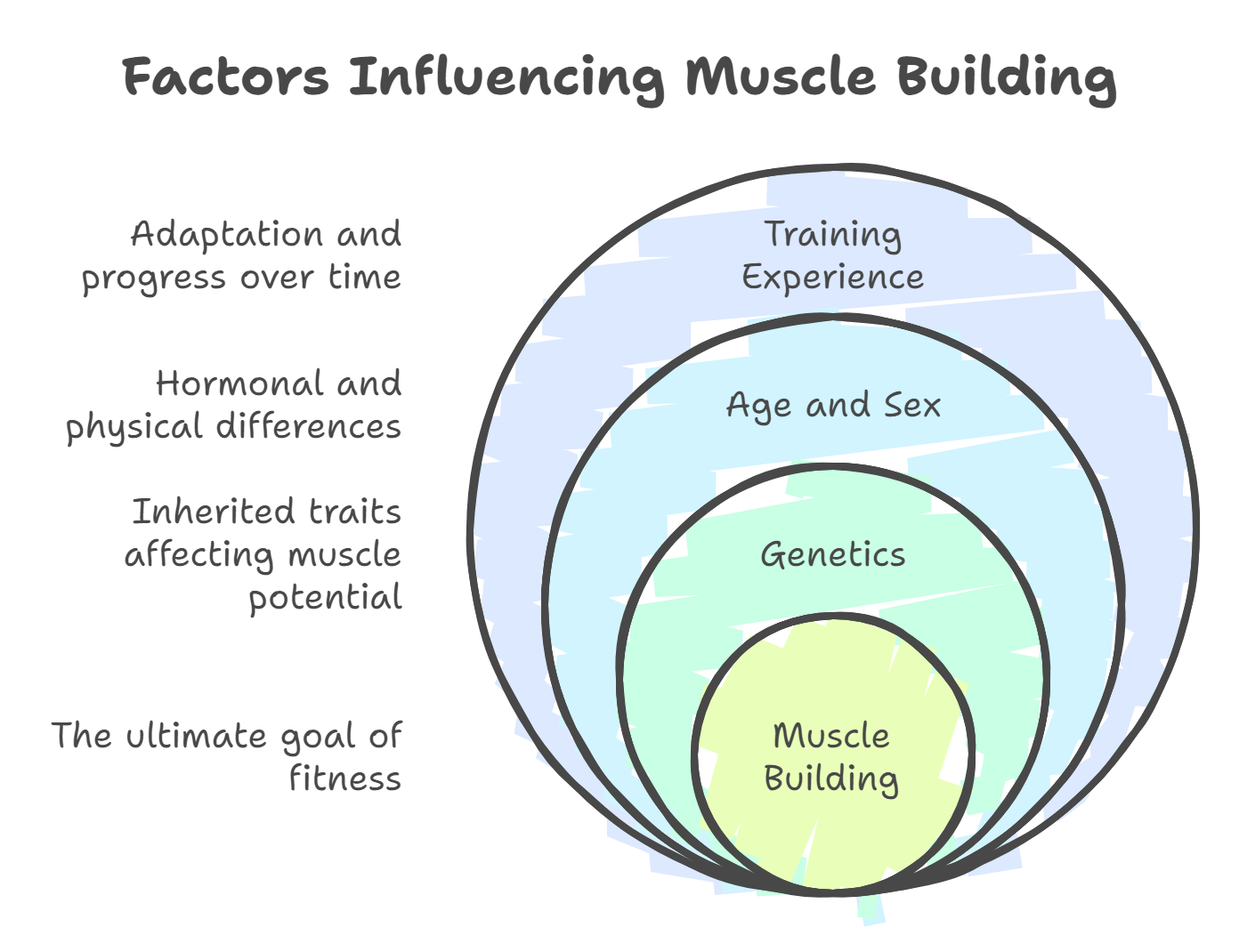
Building muscle isn’t a one-size-fits-all process. Several key factors shape how quickly you’ll see progress, including genetics, age, sex, and your training experience. Understanding these influences can help you set realistic goals and customize your workouts to fit your unique situation.
Let’s take a closer look at each one.
Genetic Influence
Your genes play a major role in determining how easily you build muscle. Some people naturally have a higher muscle-building potential because of genetic variations that affect muscle fiber composition and growth capacity.
Even if two individuals follow the same workout and nutrition plan, their results can differ significantly due to these inherited traits. That said, as powerful as they are, genetics aren’t your last stop. But consistent training and proper nutrition can lead to impressive muscle gains for everyone.
Age and Sex Differences
Hormones play a pivotal role in muscle growth, and their effects differ between men and women. Men typically have higher testosterone levels, which gives them an edge in building muscle faster. Growth hormone also supports tissue repair and development, but its production changes with both age and sex.
As we age, resistance training becomes more challenging. Starting around age 30, muscle mass tends to decline by 3-5 percent every decade. Despite this natural decline, strength training remains a powerful tool to slow down muscle loss and improve muscle tone at any stage of life. It’s a reminder that age is just one factor, not a barrier, to gaining strength and muscle.
Extra Tips:
- Women: While women generally have lower testosterone levels, they can still build impressive muscle through resistance training. Focus on progressive overload and prioritize compound movements like squats and deadlifts. Don’t shy away from lifting heavy weights though. Muscle growth is absolutely achievable.
- Older Adults: Incorporate strength training 2-3 times a week to combat age-related muscle loss. Emphasize proper form and recovery, and consider working with a personal trainer to tailor exercises to your needs.
Training Experience
If you’re new to lifting, your body responds quickly, often adding 1 to 4 pounds of muscle each month. This rapid progress is exciting but tends to taper off as you become more experienced. For seasoned lifters, muscle gains slow dramatically, sometimes to as little as a quarter of a pound per month, because the muscles have adapted to the training stimulus.
This is where variety and challenge become essential. To keep moving forward, you need to push beyond your comfort zone. That could mean increasing the weight on your bench press or trying new exercises like lateral raises.
Without this ongoing challenge, progress stalls. The key is to keep your muscles guessing and growing by mixing up your routine and steadily upping the intensity.
Pro Tips:
- Beginners: Focus on mastering form and consistency. Aim for full-body workouts that hit all major muscle groups, and gradually increase weights as your strength improves.
- Advanced Lifters: Incorporate periodization; the process of cycling through phases of different training intensities and volumes, to break plateaus. Experiment with advanced techniques like supersets or drop sets to stimulate new growth.
When all of these are considered, you can tailor your training approach and maintain motivation throughout your fitness journey.
Effective Resistance Training Programs
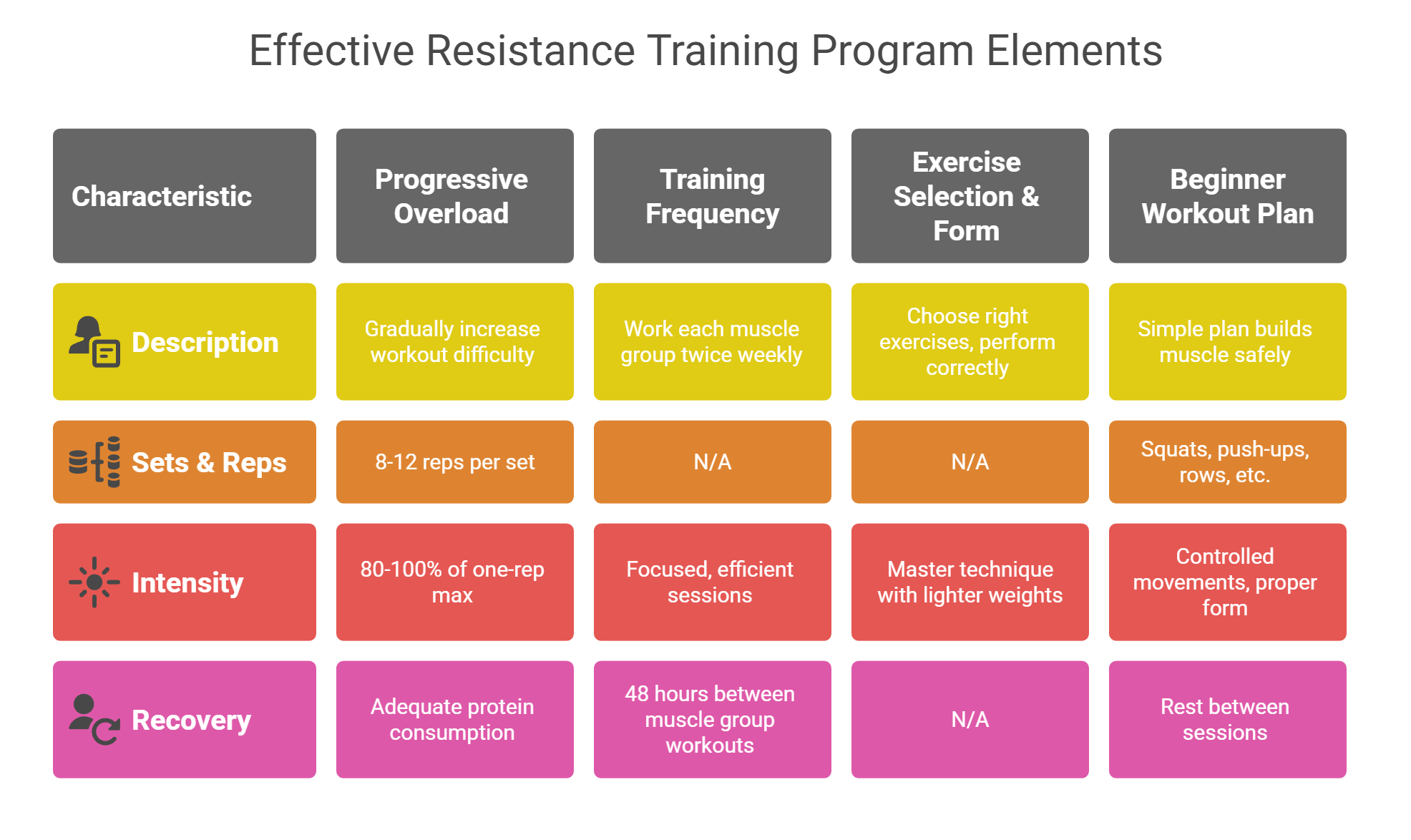
A solid resistance training program is the backbone of any muscle-building journey. Resistance training is the most effective method for building muscle mass due to the tension it creates in muscles. The right approach not only maximizes muscle growth but also keeps you progressing toward your fitness goals.
So, what sets an effective program apart? It’s the seemingly simple smart exercise choices, perfecting your form, and steadily increasing the challenge.
Let’s break down the essential elements that make a resistance training plan truly effective.
Progressive Overload
Progressive overload is the driving force behind muscle development. It means gradually making your workouts more challenging, by adding weight, increasing reps, or tweaking intensity, to keep your muscles adapting and growing. This principle, combined with a few other essentials, sets the stage for real progress:
- Progressive overload: Keep raising the bar, whether that’s more weight or extra reps.
- Adequate protein consumption: Fuel your muscles with enough protein to repair and grow.
- Proper recovery: Give your body time to rebuild stronger between sessions.
- Consistent training: Aim for 2-3 workouts per week, hitting all major muscle groups.
For optimal muscle gains, target 8 to 12 repetitions per set at a challenging intensity. Most experts recommend working at 80-100% of your one-rep max, aiming to finish each set with 1-5 reps.
This approach pushes your muscles close to their limit, without burning out, ensuring continuous adaptation and helping you sidestep your current level.
Training Frequency
How often you train matters just as much as how hard you train. Research suggests that working each key muscle group at least twice a week is ideal for muscle growth. Sessions can be as short as 20-30 minutes if you stay focused and efficient.
Try to space workouts so that each muscle group gets about 48 hours to recover before being trained again. This rhythm keeps your muscles engaged and growing, while preventing overtraining and injury.
Exercise Selection and Form
Choosing the right exercises, and performing them correctly, makes all the difference. Compound movements like squats, deadlifts, and bench presses work multiple muscle groups at once, making them more effective for building overall strength and size than isolation moves alone. Free weights are especially valuable for engaging, stabilizing muscles and promoting balanced growth.
If you’re just starting out, begin with lighter weights to master your technique. As you gain confidence, gradually increase the load to keep challenging your body. Don’t overlook bodyweight exercises too. Push-ups, pull-ups, and squats can be powerful muscle builders, especially when performed with intensity and good form.
For more pronounced results, mix up your training sessions with new exercises or variations every few weeks. This prevents plateaus and keeps your muscles guessing. If you’re unsure about technique, consider working with a personal trainer or consulting a sports professional.
Beginner-Friendly Workout Plan
Here’s a simple, effective workout plan designed for beginners to build muscle safely and steadily. Aim to perform this routine 2-3 times per week, allowing at least one day of rest between sessions:
- Squats (Bodyweight or Dumbbell): 3 sets of 8-12 reps
Targets: Quads, glutes, hamstrings
- Push-Ups (Knee or Standard): 3 sets of 8-12 reps
Targets: Chest, shoulders, triceps
- Bent-Over Dumbbell Rows: 3 sets of 8-12 reps
- Dumbbell Romanian Deadlifts (RDLs): A highly effective exercise to strengthen your posterior chain and build lower body strength using dumbbells.
Targets: Back, biceps
- Dumbbell Shoulder Press: 3 sets of 8-12 reps
Targets: Shoulders, triceps
- Glute Bridges: 3 sets of 12-15 reps
Targets: Glutes, hamstrings
- Plank: Hold for 20-30 seconds, 3 rounds
Targets: Core stability
Focus on controlled movements and proper form throughout each exercise. As you get stronger, gradually increase the weight or number of repetitions to maintain progressive overload. This balanced routine hits all major muscle groups and builds a solid foundation for future progress.
Nutrition Strategies for Muscle Gain
Nutrition is the foundation that supports your muscle-building efforts. Without the right fuel, even the best training program can fall short. An essential element of muscle growth are amino acids, which are the building blocks of protein, which drive muscle protein synthesis, the process that repairs and builds muscle tissue.
The following are key nutrition strategies that help maximize your gains.
Protein Intake
To stimulate muscle growth effectively, it’s essential to consume enough protein daily. Aim for about 1.6 to 2.2 grams of protein per kilogram of your body weight, adjusting based on your specific goals and training intensity. Equally important is spreading your protein intake evenly throughout the day. This steady supply keeps protein creation active and efficient.
Post-workout nutrition also plays an important role. Consuming protein immediately after exercise can improve muscle repair, as muscle protein synthesis ramps up within 2 to 4 hours following training and can stay high for up to 24 hours.
Protein powders, like whey, offer a convenient way to hit your protein targets, especially when time or appetite is limited. For those following a plant-based diet, soy protein serves as an effective alternative that supports muscle growth.
Caloric Surplus
Muscle repair and growth demand energy, which means eating more calories than you burn (a caloric surplus) is necessary. The goal is to provide enough fuel to build lean muscle while minimizing fat gain. Adding just enough calories above your maintenance level ensures your body has the resources it needs without unnecessary fat accumulation.
Conversely, consuming fewer calories than you expend can lead to weight loss, but this often includes losing both fat and muscle mass, which is counterproductive when building muscle is the goal.
Supplements
Certain supplements can complement your diet and training to accelerate muscle gains. Creatine is one of the most researched and effective supplements; it serves as a quick energy source for muscles, improving performance and supporting growth. A common creatine protocol involves a loading phase of 5 grams taken four times daily for 5 to 7 days, followed by a maintenance dose of 5 grams per day.
Whey protein stands out for its ability to stimulate muscle protein synthesis more effectively than other proteins like soy or casein. For vegans or those avoiding dairy, soy protein is a strong plant-based alternative that meets muscle-building needs.
Combining creatine and protein supplementation with consistent resistance training creates a powerful synergy, helping you make significant muscle gains.
The Role of Recovery in Muscle Building
Recovery is often overlooked in the muscle-building journey, yet it’s the key phase where your hard work in the gym truly pays off. This is when your body repairs muscle fibers and tissues, allowing growth and adaptation to take place. Without proper recovery, your muscles can’t rebuild effectively, and you make little or no progress.
What then are the key elements of a recovery process?
Quality Sleep
Aim for 7 to 9 hours of good sleep each night. During deep sleep, your body releases hormones like growth hormone and testosterone, which are essential for muscle recovery and growth. Without enough rest, muscle recovery slows down, and you risk losing the gains you’ve worked so hard to build.
Interestingly, even high-intensity interval training can help maintain muscle mass when sleep is limited, but this isn’t a sustainable substitute for consistent, good sleep.
Avoiding Overtraining
Pushing too hard without giving your muscles time to recover can backfire. Overtraining increases the risk of injury and hampers muscle growth. A good rule of thumb is to wait 48 to 72 hours before training the same muscle group again.
It is advisable to cut down to two to four strength training sessions per week to balance stimulus and recovery effectively. This approach ensures your muscles have the time they need to repair and grow stronger.
Preventing Muscle Loss and Maintaining Gains
Muscle loss can happen if recovery and nutrition aren’t prioritized. So, how do you keep your hard-earned muscles intact?
First, consistency is key. Skipping workouts or cutting back too much on training volume can lead to muscle atrophy over time. Second, maintaining adequate protein intake supports muscle preservation even during periods of reduced activity. Third, managing stress and avoiding excessive fatigue help prevent catabolic states where muscle breakdown exceeds repair.
Prioritize rest as much as reps, and you’ll protect your gains while setting the stage for continued progress.
Tracking Progress and Adjusting Programs
When it comes to building muscle, progress isn’t always a straight line. Sometimes you’ll hit exciting milestones, and other times, you might feel stuck. That’s why tracking your workouts and knowing when to adjust your program is important.
Here is how to do that.
Keeping a Workout Log
A workout log does more than just record numbers; it builds accountability and helps you develop consistent habits. Make sure to note key details such as:
- Date,
- Exercises performed,
- Sets and reps completed,
- Weights used.
Whether you prefer a traditional journal or a digital app, logging these metrics allows you to track progress accurately and apply progressive overload. Over time, patterns emerge that highlight your strengths and areas needing adjustment.
Program Modifications
If you find that your progress is not matching up with the amount of work you put into training, it’s time to shake things up. Adjusting training variables like exercise tempo, rest periods, and exercise selection can reignite muscle growth.
For example, slowing down the eccentric (lowering) phase of a lift increases time under tension, challenging your muscles differently. Shortening rest intervals can improve workout intensity, while swapping in new exercises targets muscles from fresh angles.
Advanced lifters especially benefit from regularly modifying their programs to maintain gains and avoid plateaus. This might include cycling through different rep ranges, incorporating supersets, or experimenting with training splits.
Myths and Mistakes in Muscle Building
Don’t fall for common misconceptions that can hinder your gains. Here are a few debunked myths:
- Muscle turns into fat if you stop working out
False. Muscle and fat are distinct tissues; muscle mass may decrease if unused, but it won’t convert into fat .
- You need to lift heavy weights to build muscle
Not always. Muscle growth is stimulated by keeping muscles under tension, which can be achieved with lighter weights and higher repetitions or even bodyweight exercises .
- Lifting weights makes women ‘bulky’
Incorrect. Women typically lack the high testosterone levels needed to build significant bulk, requiring extreme training and diet to achieve a bodybuilder physique .
- More sweat means more fat loss
Not true. Sweating is your body cooling itself; the amount of sweat doesn’t directly indicate calorie burn or fat loss .
- Cardio kills muscle gains
Moderate cardio does not prevent muscle growth, provided you maintain strength training and proper nutrition . A balanced routine of both cardio and strength training is effective for fat loss and body building .
- You can target fat loss (spot reduction)
This is also not true. Your body burns fat as a whole, not just from specific areas you train .
Summary
Building muscle is much like crafting a masterpiece; it takes time, the right tools, and careful attention to every detail. Having success in muscle growth doesn’t come from quick fixes but from a mix of smart training, solid nutrition, and proper recovery.
The journey demands patience and consistency, but with each step, you’re closer to the strength and physique you want.
At RX Fits, we have made it easy to turn this complex process into a clear, manageable plan. Our expert-designed programs combine personalized training and nutrition guidance, tailored to your unique goals.
If you read to this point, you might as well enjoy a healthier and better life.
Frequently Asked Questions
How long does it take to see noticeable muscle growth?
You can expect to see noticeable muscle growth in 4-12 weeks of consistent training, with initial strength improvements appearing as early as 2-4 weeks.
What factors influence the rate of muscle growth?
The rate of muscle growth is primarily influenced by genetics, age, sex, training experience, and nutrition, all contributing to individual potential for muscle gain. Understanding these factors can help you tailor your approach for optimal results.
How important is protein intake for building muscle?
Protein intake is essential for building muscle, with a recommended daily intake of 1.6 to 2.2 grams per kilogram of body weight to maximize muscle creation and recovery. Prioritizing this level of protein is key to achieving your muscle-building goals.
How often should I train to build muscle effectively?
To build muscle effectively, train 2-3 times per week, targeting each major muscle group at least twice. This approach ensures optimal growth and maximizes your training efforts.
What role does recovery play in muscle building?
Recovery plays a crucial role in muscle building by facilitating muscle repair and growth through good sleep, proper nutrition, and avoiding overtraining. Prioritizing adequate rest not only enhances your gains but is foundational for achieving optimal results.
What are the best exercises for muscle growth?
Some of the best exercises include compound lifts, free weights, body weight exercises and progressive overload.
